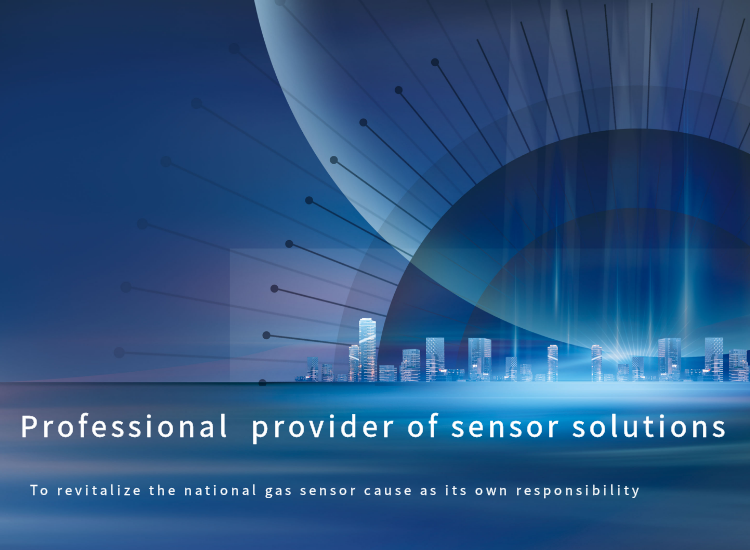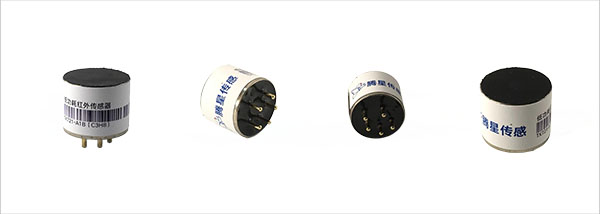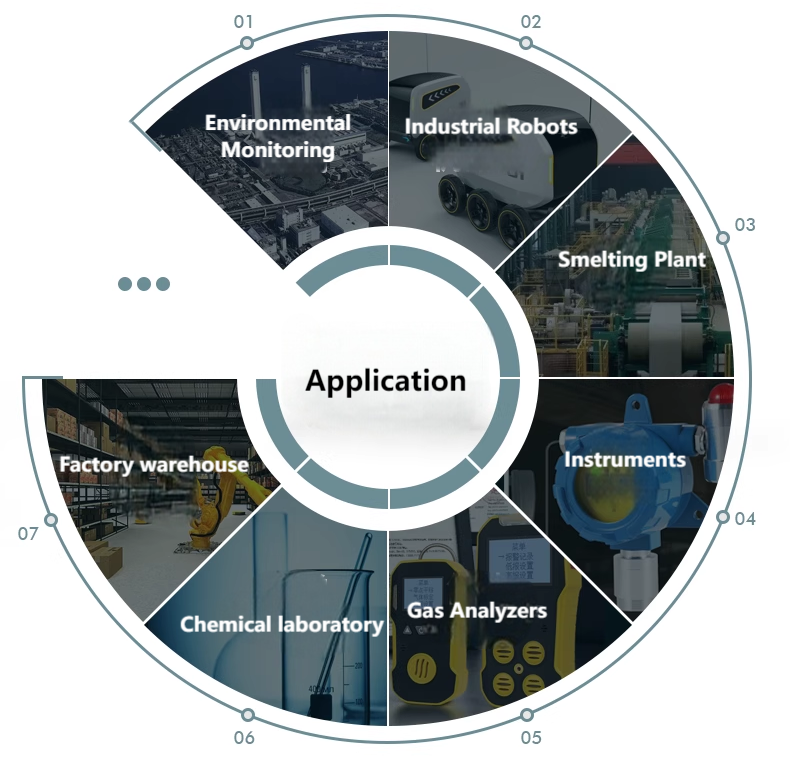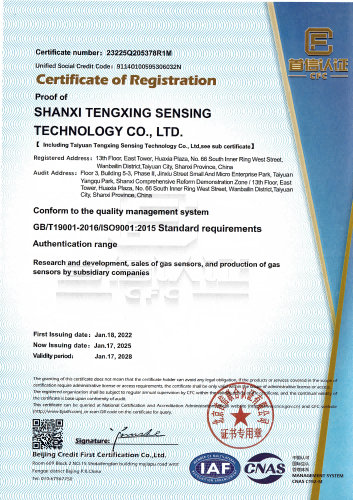

 Products
Products CH4 Gas Sensor
CH4 Gas Sensor
Detection of methane, propane, hydrocarbons and other gases
Application:
Atmospheric pressure is 86kPa~106kPaProduct characteristics:
High sensitivity, high resolution, fast response timeDescription
TX721-A1B is a type of gas sensor developed based on non-dispersive infrared spectroscopy (NDIR) technology. It can detect gases such as methane and propane hydrocarbons. It adopts a diffuse air intake method and is suitable for gas detection and early warning in the industrial field. At the same time, it meets the requirements of intrinsically safe explosion-proof certification. The internal temperature/humidity compensation algorithm is added to adapt to different temperature environments. It has the characteristics of high sensitivity, anti-poisoning, long life, and use in hypoxic environments.
Product images

Parameters
Test parameters | Technical Index |
Operating voltage | DC3.0~5.5V |
Operating voltage | Average current<1.0mA, peak current<60mA |
Average power consumption | |
Output format | Figure, UART |
Operating temperature | -20-60 ℃, expandable temperature -40-70 ℃ |
Operating humidity | 0-95% RH (no condensation) |
Storage temperature | 0-40 ℃ (recommended temperature) |
Operating pressure | 800~1200mbar |
Weight | ≤10g |
Weight | φ20*16.6mm |
Service life | 5 years (in a clean room temperature environment) |
Optical coating | High reflection film |
Detection gas | Methane, CH4, propane, C3H8, carbon dioxide, CO2, etc Methane 0-5.0% Vol (0-100% LEL) Methane 0-100% Vol (optional) Propane 0-2.2% vol (0-100% LEL) Carbon dioxide 0-100% vol (optional) |
Resolution | Methane 50ppm Propane 20ppm Carbon dioxide 10ppm |
Warm-up time | ≤5s |
Response time | T90≤10s |
Repeatability | ± 1% full range or ± 2% indication |
Linear accuracy | ± 3% full range or ± 5% indication |
Humidity characteristics | Relative to 50% RH reading deviation: ± 2% full range or ± 15% indication |
Temperature characteristics | Relative to 25 ℃ reading deviation: ± 2% of the full range or ± 10% of the indication within the range of ‒ 20 ° C to 50 ° C; ± 4% of full range or ± 20% of indication in other operating temperature range |
Long-term stability | Monthly drift ± 2% of full range or ± 5% of indication |
Measurement interval | One sampling point per second (1Hz) |
Serial port baud rate | 9600,19200,38400,57600 (default) |
Explosion-proof level | Intrinsic safety ia (ExiaICT4Ga) |
Certification standard | GB/T3836.4-2021 |
Pin Definition
Pin name | Name | Pin description |
1 | VCC | Power supply 3.0~5.5V |
2 | TXD | TTL level signal, 2.8V |
3 | RXD | TTL level signal, 2.8V |
4 | GND | Ground signal |
5 | DAC | Analog signal output |
Characteristic curve
The following figure is the sensor temperature, repeatability, linearity and accuracy characteristic curve, as shown in the figure:
Application

Production workshop

Certificate Qualification

TenSensor, China's first listed gas sensor company,Tensensor can provide more than 100 varieties of six series including:
semiconductor gas sensor
electrochemical gas sensor
infrared gas sensor
dust sensor
pyroelectric sensor
thermopile sensor, etc.
Which can be used for more than 200 kinds of gas and infrared, dust and other indicators detection, widely used in the field of security for detecting gas leakage, noxious gas leakage, smog and fire, the field of family, office and factory for detecting HCHO, VOC, CO2, PM2.5 and so on.
Moreover, the solutions for security, household electrical appliances, consumer electronics, smart home, instruments and meters are available.
For more information about TX721-A1B sensor, please contact account manager.
TEL:0086-0351-5249552
Whatsapp:+86 18335818384
Email: [email protected]
Request Consultation